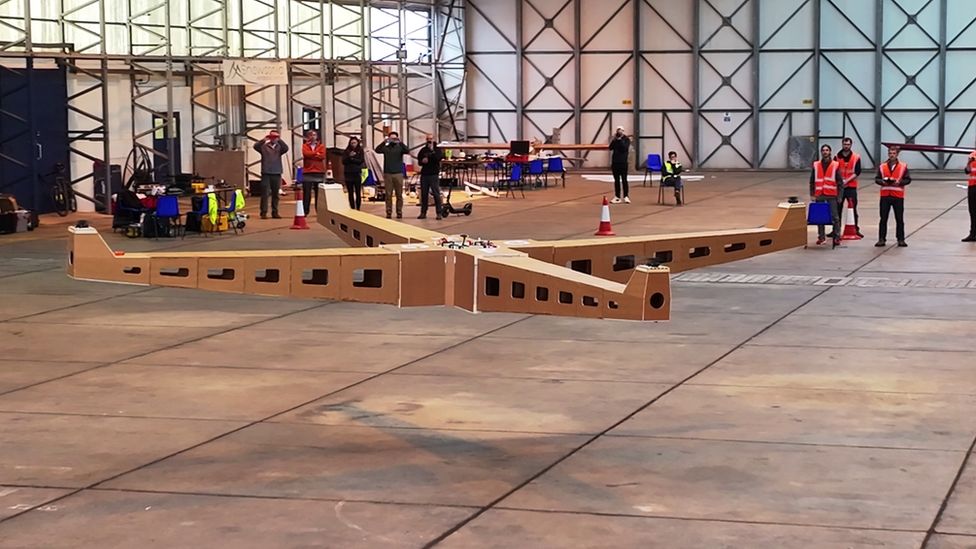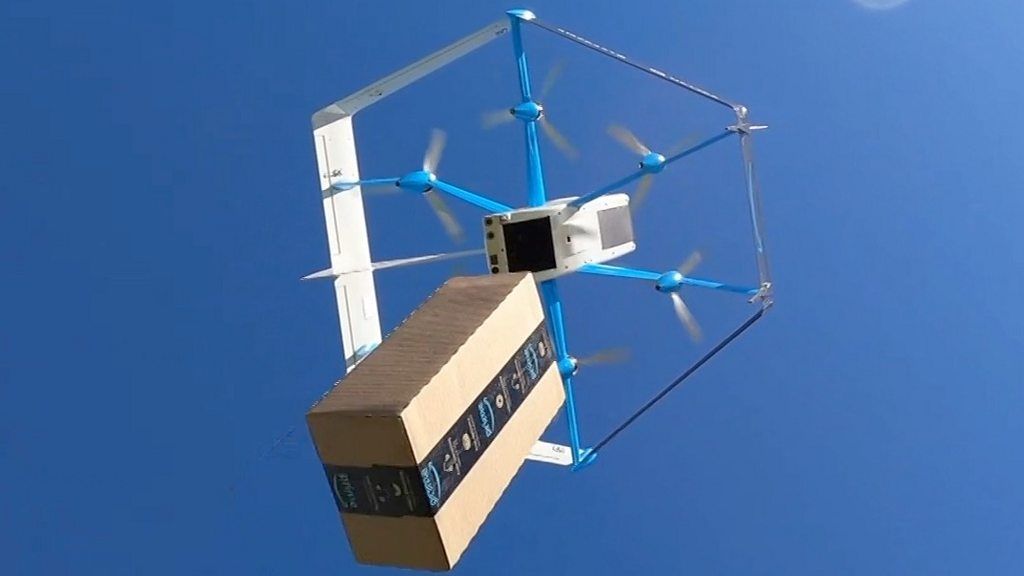Manchester University claims huge drone record

Engineers at the University of Manchester have flown what they claim may be the biggest unmanned quadcopter drone yet built.
The university says it is unaware of a bigger unmanned quadcopter, but there is no independent verification of the record.
As the name suggests, quadcopters are drones with four propellers.
The drone is made from foamboard, giving it a cardboard-like appearance, and spans 6.4m (21ft) corner to corner.
The first flight of the Giant Foamboard Quadcopter (GFQ) took place in July inside a hangar at the Snowdonia Aerospace Centre.
The GFQ’s pilot, Kieran Wood, a lecturer in Aerospace Systems at the University said: “The first moments of flight are the make-or-break point for these types of multi-copter drones. There are many hundreds of things that you must get right.”
Fortunately the flight proceeded without a “rapid unscheduled disassembly”, as he put it.
The drone, which can also be flown autonomously, weighs 24.5kg – 0.5kg less than a weight limit set for drones of this type by the Civil Aviation Authority.
The quadcopter was built using sheets of foamboard – a core of foam sandwiched between paper – which is often used for modelling and mounting artwork. It started life as a project for students exploring the use of low-cost materials for lightweight aircraft structures that are more environmentally friendly than the usual carbon fibre.
Professor Bill Crowther, from the university, said: “Ultimately, with this design you are holding up 25kg of aircraft with just a few strategically placed pieces of paper – that’s the art of the possible.”
The team will now try to make the craft even bigger.
While the use of cardboard-like materials in drone manufacture may seem more like child’s play than cutting edge aviation, cardboard drones are a serious business.
Fixed-wing cardboard drones made by Australian firm SYPAQ have been supplied to Ukraine. In March the company revealed hundreds of the flat-packed drones were being shipped to the country each month.
Among their advantages, the drones can easily be assembled by soldiers in the field and their cardboard construction makes them less visible to radar.
While the drones are designed to carry payloads such a blood supplies, some have reportedly been modified in the field to carry munitions and have taken part in attacks.

